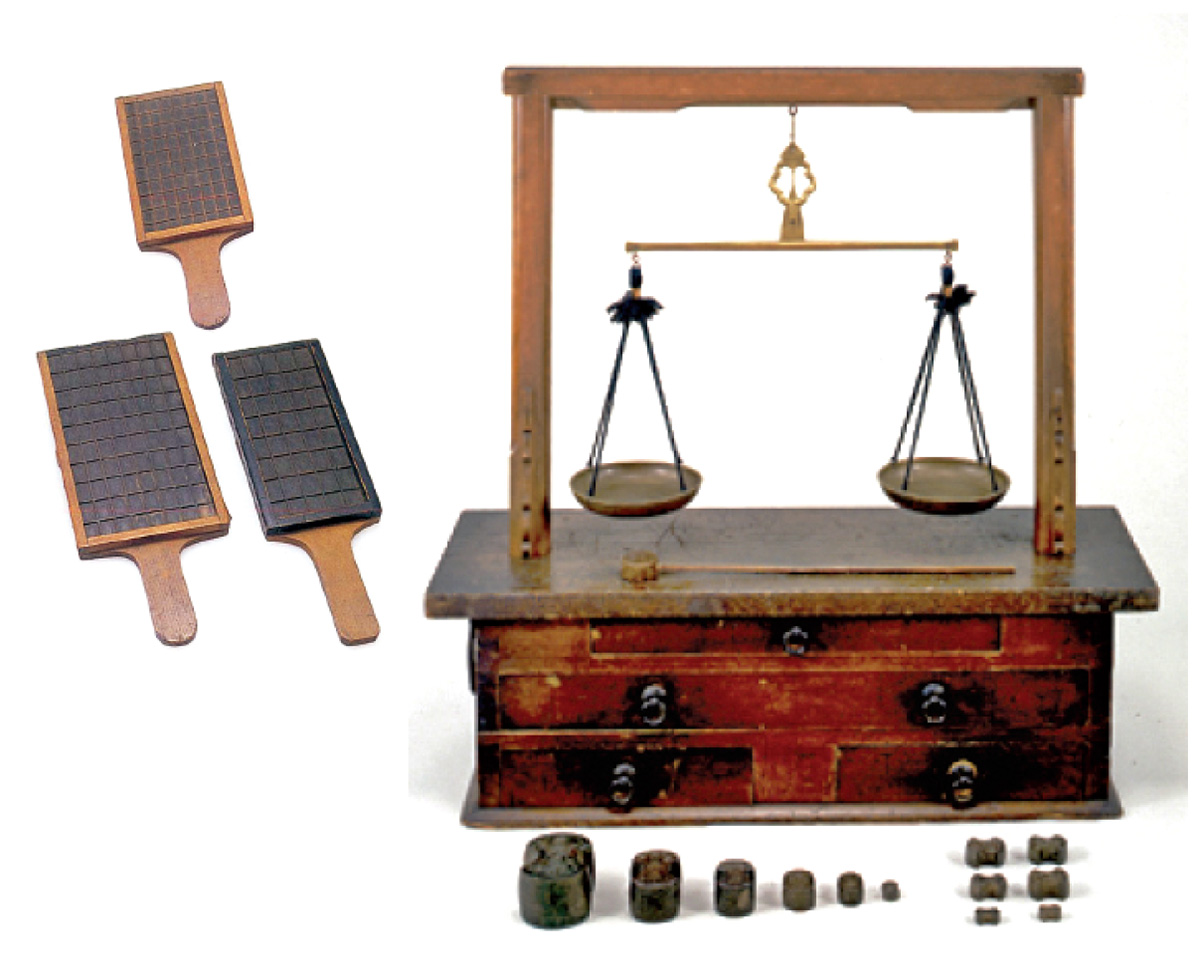16 Money Exchange Stores (1): Chartered Purveyor of Exchange Services to the Shogunate
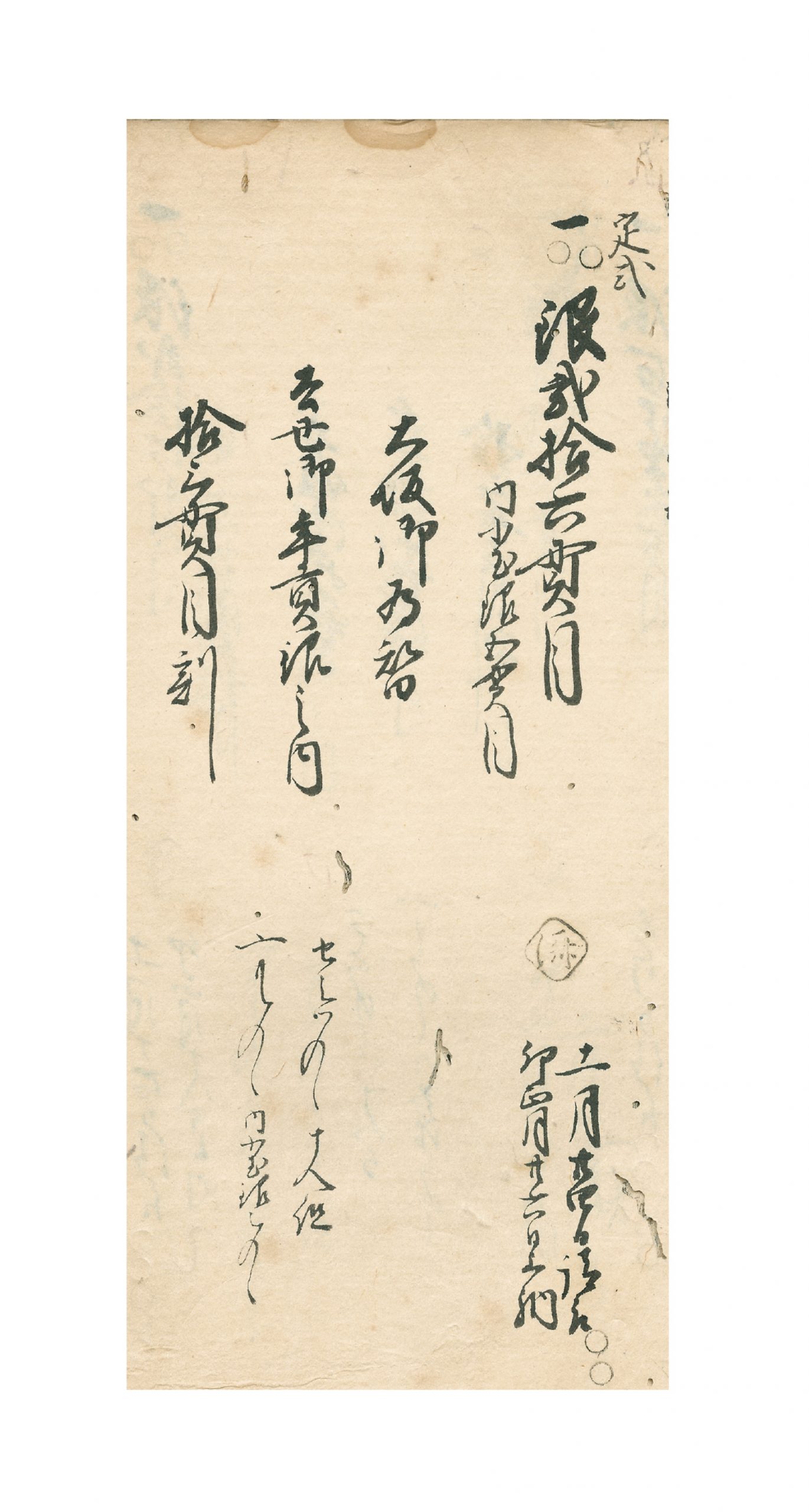
Ryogaedana Ichimaki
While the Hondana Ichimaki focused on the kimono business (Echigoya,→12) the Ryogaedana Ichimaki (Mitsui money exchange store) focused on banking and the money exchange business. Mitsui had an exchange store in each of the Big Three cities that maintained close ties with local entities of the shogunate while coordinating with the exchange stores in the other cities to provide other services and transactions to the shogunate. For accounting reasons, the Kyoto thread shop (Itodana) and the Kyoto Ainomachi shop, wholesale shops handling silk thread, were included in the finance division.
Money Exchange Business
In early modern Japan, gold, silver, and copper coinage coexisted, but the rates of exchange between these three currencies were not fixed. Thus exchange stores were required to convert one currency to another. In particular, honryogae such as Mitsui, which handled large-value amounts of gold and silver coins (gold was the preferred currency in Edo, silver in Kyoto and Osaka) were major commercial players capable of handling very large transactions. The exchange business in large cities did not involve currency conversion only. Their banking functions supported early modern society. Osaka wholesalers gathered and sold goods from all over the country, advancing funds procured from money exchange stores to the production areas to ensure smooth operations. Moreover, the various bills of exchange (tegata) issued by the exchange stores and backed by their reputation were an alternative to gold and silver as a means of settlement. In addition, feudal lords were continuously receiving “daimyo loans” from exchange stores in Osaka to make routine payments, and collected taxes (mainly in the form of agricultural products) from their subjects to settle them. These functions of the exchange stores are said to have contributed significantly to the establishment, development, and maintenance of nationwide markets and feudal domain finances.
Osaka Exchange Services for the Shogun’s Treasury
Services provided to the shogunate by Mitsui and others (→Fig. 16d) were very important. Two large streams of funds moved between Osaka, a major commercial entrepot, and Edo, the greatest center of consumption. Edo wholesalers made payments to Osaka wholesalers for procurement of a wide range of goods. At the same time, the shogunate and feudal domain lords converted agricultural products collected as tax from their subjects, including land taxes paid in rice, into cash in Osaka, and sent it to Edo. Mitsui and other exchange store operators served both ends of these flows, which offset each other, eliminating the inconvenience of having to transport cash and promoting the smooth flow of funds between cities.
Purveying Diverse Services to the Shogunate
The Mitsui exchange stores also purveyed a wide variety of other services to the shogunate and feudal lords, including exchange services from Otsu and other cities to Edo, deposit of public funds and payment of smaller amounts on their behalf, loans and management of public funds, and exchange services when coins were reissued (→18 ). Thus, in the early modern period Mitsui’s finance division played an extremely important role in the economy and distribution of goods, and in the viability of shogunal and domain finances, and generated stable profits from those activities.
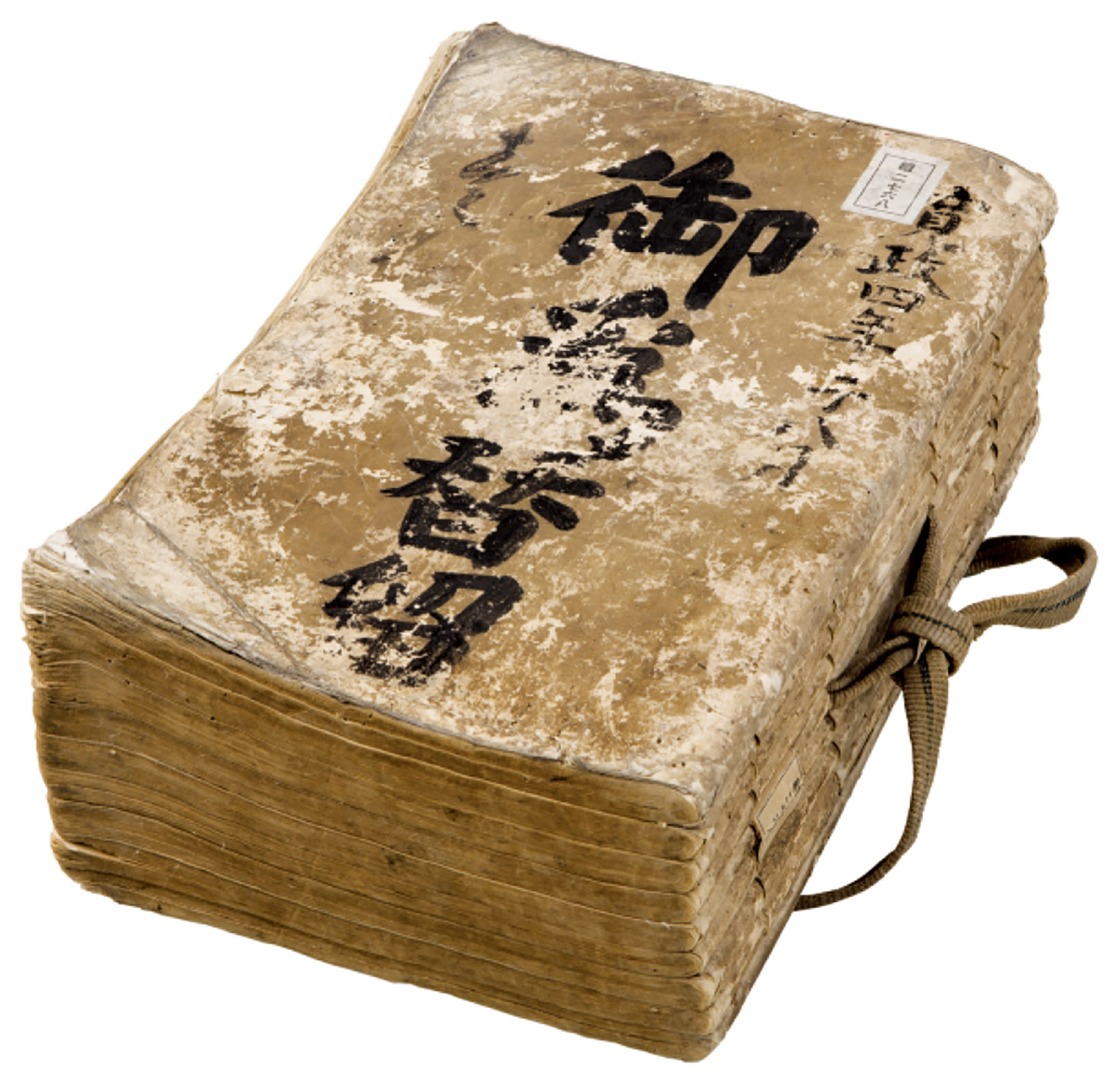
Ledgers were kept of all transactions by the Kyoto exchange store, the headquarters of Mitsui’s financial division, the Ryogaedana Ichimaki. Every detail of money exchange and transfer services provided to the shogunate was recorded in these ledgers.Thick paper was used, and was bound in a detchoso style, which was rare for early modern historical documents, and extremely durable.
This ledger is relatively new, dating to 1792. Until then, transaction records had been kept in ledgers (oshikiricho) that included a wide range of other information. Ledgers of the type shown contained only information about services purveyed to the shogunate.
Description
An instance of exchange services purveyed to the shogunate. From the upper row, the first line indicates that this is a regular transaction. The next two lines state the amount involved, 26 kan of silver (approximately 433 ryo of gold), including silver in the form of small-value coins. The next line indicates that the silver has been converted from land tax paid in rice in the previous year. The final line states that the Osaka exchange store will allocate half of the amount received to the Kyoto exchange store. The seal stamp below this indicates that the transaction has been executed. Also, the date the money was received at the shogunate’s Osaka treasury and the date it was paid into the Edo treasury are shown. Finally, recorded using a code (→19), indicate the amount to be allocated to the exchange broker involved in the transaction.
Annual land taxes, paid in rice, were the shogunate’s principal source of revenue, and Mitsui’s money exchange charter was the foundation of its exchange store services to the shogunate.
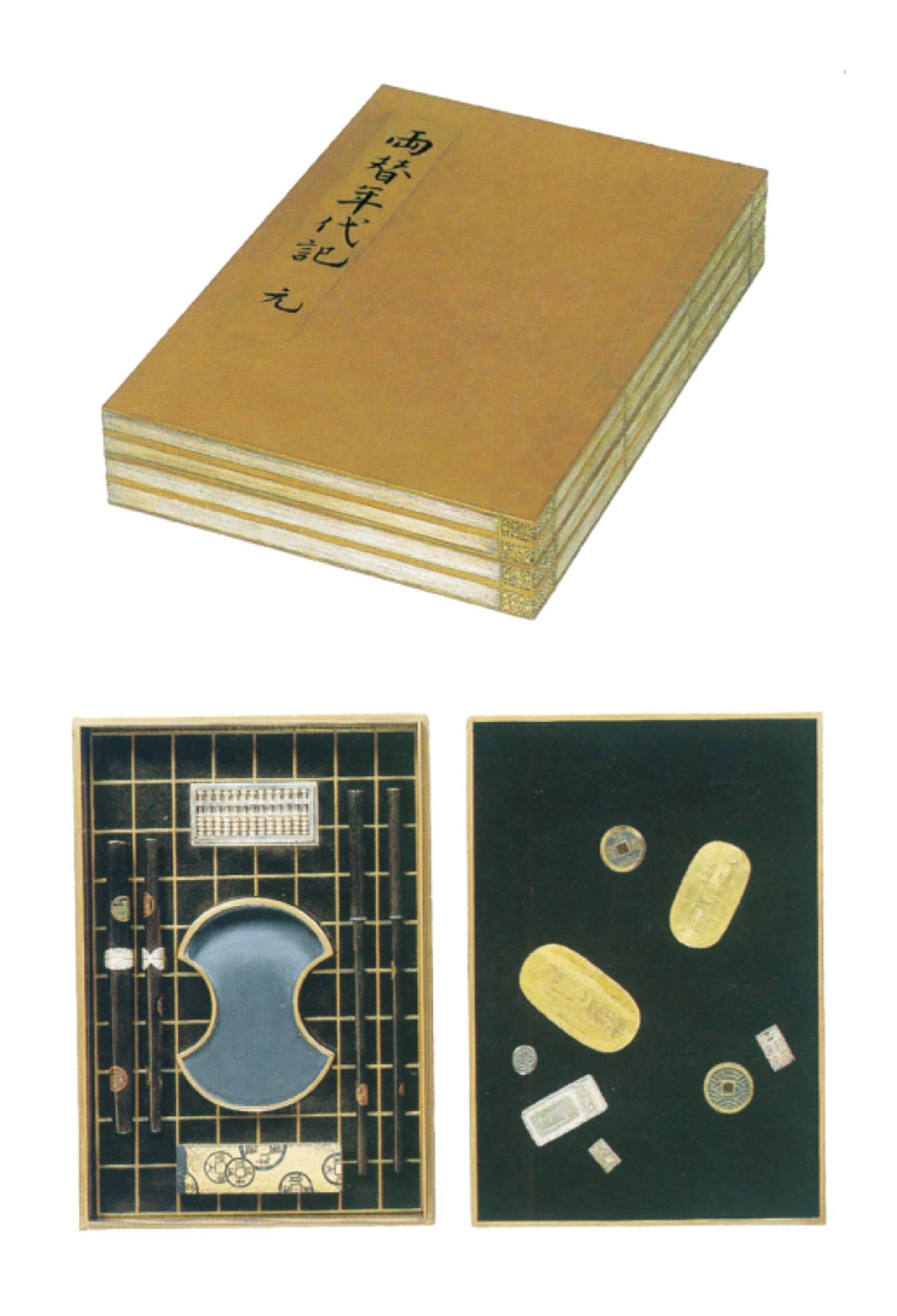
Ryogae Nendaiki is a record of the Edo money exchange association, of which Mitsui was a member. In 1932 and 1933, Mitsui Takasumi, third son of Mitsui Takamine (→38) had these materials published with assistance from the former Mitsui Bunko. At the same time, he asked Zohiko, a famed manufacturer of lacquerware, to create a commemorative inkstone case to mark the publication. This shows how Mitsui, which made banking one of its core businesses in the modern era, prized its roots in the money-exchange business of the early modern period.
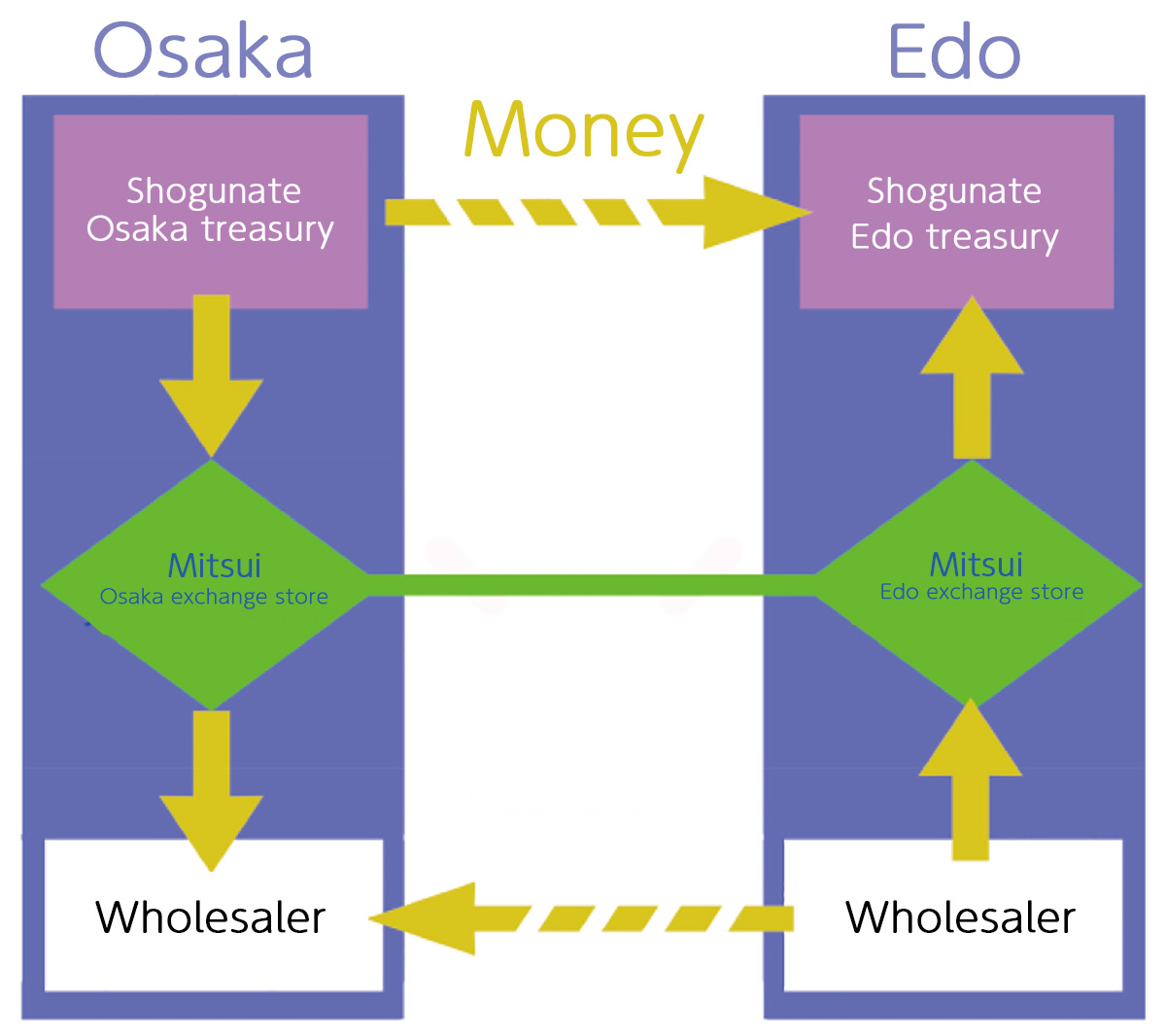
An example of the most important service: money exchange between Osaka and Edo. Remittances between distant locations (dashed arrows) are executed through offset. Transfers of cash and silver (solid arrows) take place locally, within each city.



